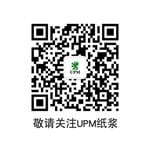As a pioneer of sustainable packaging materials, UPM has closely followed the development of the PPWR and participated in discussions with decision-makers and stakeholders. We have advocated for the recognition of fibre-based packaging materials because of their high recycling rates and potential to replace fossil-based materials. We have also called for thorough impact assessments as a basis for policy decisions. During the political process, the Commission's proposal has been significantly improved. Next, the regulation will be formally adopted and then implemented in the EU Member States.
Moderated reuse targets and single-use plastic packaging restrictions
The biggest gap between the negotiators was over restrictions on single-use packaging and reuse targets. The original Commission proposal would have restricted more widely single use packaging made of all materials. In the end, the PPWR will only restrict the use of single-use plastic packaging in end-uses such as grouped packaging at the point of sale, packaging for fresh fruit and vegetables (less than 1.5 kg) and for food and drink in the HORECA (hotels, restaurants and catering) dine-in sector. Restrictions will apply from 2030.
While increasing reuse has often its environmental merits, the final outcome is much less dogmatic and has more emphasis on the recyclability and functionality of packaging. Reusable packaging will increase in the market, but not to the extent originally proposed by the European Commission in 2022. For example, there will be no mandatory reuse targets for the HORECA take-away sector. However, the HORECA sector will be required to provide a system for consumers to bring their own container to be filled and to offer the consumers the option of packaging within a system for re-use.
All packaging placed on the market shall be recyclable – and rightly so
One of the driving ideas behind the PPWR is that all packaging put on the market should be recyclable. From UPM's point of view, it is imperative for the entire packaging value chain to increase the recycling rate of all materials. We are pleased that in the end recycling and reuse were seen as complementary solutions in the regulation.
However, many of the detailed requirements arising from PPWR will remain open for several years. In particular, design for recycling guidelines and recyclability performance grades will be defined by the European Commission in so-called delegated acts by 1 January 2028. When drafting these delegated acts, the Commission must take into consideration standards developed by European Standards Organisation, which in packaging means the European Committee for Standardisation (CEN).
The work will not start from scratch: many industry associations and initiatives, such as 4evergreen, have been working for years to develop the recyclability and recycling of packaging materials. These experiences should be taken into account in the Commission's delegated acts and in CEN working groups, where also UPM is actively contributing.
Potential of bio-based plastics to replace fossils is recognised in PPWR
UPM’s wood-based naphtha, and in the near future our biochemicals, can be used as sustainable feedstock for the production of bio-based plastics. We're pleased that PPWR recognises the role of using bio-based raw materials to replace fossils in the minimum recycled content requirement for plastic packaging. The Commission will assess the state of technological development of bio-based plastic packaging in 2027 and, based on this assessment, set targets and sustainability criteria for bio-based feedstocks in plastic packaging. This decision will further increase appetite of brand owners to develop packaging solutions made from renewable feedstock.
Next steps in the legislative process
The Regulation will now move on to final adoptions by the Parliament and Council, which are expected by the end of April. After the EU elections in June, the newly elected Parliament would have to approve the provisional agreement by means of a "corrigendum". The regulation would then be formally adopted by the European Council at the end of 2024 and enter into force 20 days after its publication in the EU’s Official Journal.
The regulation will apply 18 months after its entry into force. This means that in practice, new rules for EU packaging will have to implemented in all 27 EU Member States in the summer of 2026.
Shared goal: more sustainable packaging
During the PPWR decision-making process, it has become clear that all stakeholders and decision-makers want to make packaging more sustainable and solve the growing packaging waste problem. As often in politics, the goal is shared but the ways to get there are intensely debated.
Now that the new rules are soon in place, it’s up to the packaging material producers and users to find the most sustainable solutions within set boundaries. At UPM, we are ready for this.
